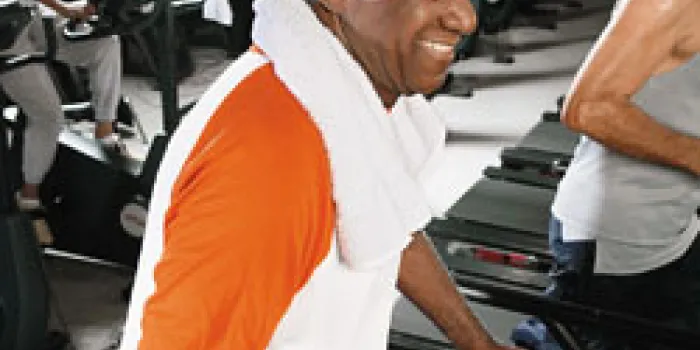When it’s cold outside, it’s hard to get motivated to exercise. Luckily, staying indoors and getting fit go hand-in-hand. Myriad exercise machines will have you working up a sweat on even the coldest days. But figuring out which machine is best for you can be tough, especially with the extra caution needed when you have a bleeding disorder.
“The most advantageous equipment is also the simplest and easiest to use, like the treadmill or the exercise bike,” says Steve Houghton, PT, a physical therapist at The Therapy Institute in Haslett, Michigan. “If you are really going to use it, spend the money. Buy what you can afford and get started.”
Stationary Bikes
Both Houghton and Alice Anderson, PT, MS, PCS, at Children’s Medical Center of Dallas, advocate using stationary bikes. They can provide a great cardiovascular workout and have virtually no impact on joints, making them the ideal choice for anyone with knee or ankle problems. Some models even offer an upper body workout, with dual action handlebars that riders push and pull as they pedal. In “Playing It Safe: Bleeding Disorders, Sports and Exercise,” the National Hemophilia Foundation (NHF) gives exercise bikes a 1, its safest rating.
Treadmills
Treadmills, another low-impact option, are also favorites of Houghton and Anderson. NHF rates treadmills at 1.5 on its 5-point safety scale, just below exercise bikes, which means that they are considered safe to moderate-risk equipment. Houghton cautions that anyone who has trouble walking because of bad ankles should be cautious about working out on a treadmill.
Rowing Machines
Rowing machines work your arm, leg and shoulder muscles as well as your abdominals and lower back. They also provide an excellent aerobic workout. Like treadmills, rowers receive a 1.5 on NHF’s safety scale.
Elliptical Trainers
Elliptical trainers combine some of the best elements of treadmills and exercise bikes. They offer a heart-quickening cardiovascular workout on par with brisk walking or running while being as gentle on the joints as a ride on a stationary bike. All elliptical trainers work the lower body, and many models also strengthen the upper body. And, Anderson says, they put no undue stress on your joints. Like exercise bikes, ellipticals get an NHF safety rating of 1.
[Steps for Living: Exercise and Activity Options]
Form and Function
No matter what exercise machine you choose, the first order of business should be learning to use it properly, say Houghton and Anderson. That means, for example, knowing how to set the seat of the exercise bike at the proper height in order to avoid undue strain on your knees. Both Anderson and Houghton recommend working with the physical therapist at your hemophilia treatment center. He or she will help you develop an appropriate workout and make sure that, whatever equipment you choose, you are using it safely and effectively.
“Exercise without resistance until you are sure you have the proper form,” Anderson recommends. In other words, program your machine on its lowest setting and practice before pushing yourself.
Allan Kucab, BSN, GN, a nurse at University of Michigan Hospital in Ann Arbor, has learned this exercise lesson the hard way.
“If I overdo it or do something wrong, I’ll be out for a few days because I gave myself a bleed,” says Kucab, 27. “It’s so easy to strain yourself if you’re not exercising properly.” As a precaution, Kucab, who has severe hemophilia A, uses prophylactic treatments before each trip to the gym, especially if he is anticipating a strenuous workout.
Finally, pay attention to what your body tells you. Houghton says, “Ask yourself at the end of your workout, ‘Do I feel fatigued?’ You want to feel the effort, but you don’t want to exhaust yourself and you don’t want any pain.”
Home or Away
It’s not just a question of which machine to use. You also have to decide where to work out—at home or at the gym. Both have pros and cons.
Most gyms have exercise machines of all descriptions. If you don’t feel like hitting the treadmill, vary your workout by hopping on the exercise bike instead or trying out the elliptical trainer. Cross-training does more than keep your workout interesting. By focusing on different muscle groups on different days, you lower the risk of injury due to strain.
“Variety is important,” says Houghton. “It allows you to modify your workout to take problem areas into account.”
The downside is that gyms often have steep monthly membership fees. Houghton cautions that getting to the gym can be a challenging commitment for some people. If that describes you, then you might be better off getting your exercise at home, where you can park your exercise bike or your treadmill in front of the television and hop on at a moment’s notice. The tradeoff is that you sacrifice variety for convenience.
“Ask yourself, ‘What am I realistically going to do? What will work for me?’” says Houghton. “Just keep it simple. The point is to be able to do it. Take satisfaction in the fact that you are doing something.”

